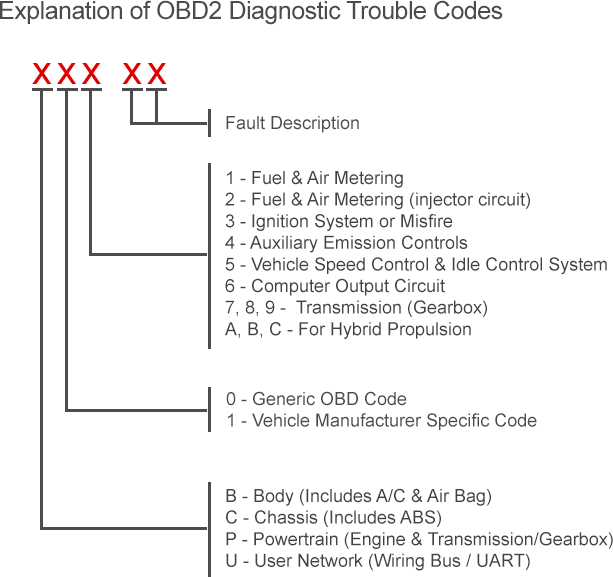
P2183 - Sensor #2 ECT Circuit Range/Performance
Content
P2183 - Sensor #2 ECT Circuit Range/Performance
OBD-II DTC Datasheet
Engine Coolant Temperature (ECT) Sensor # 2 Circuit Range / Performance
What does this mean?
This Diagnostic Trouble Code (DTC) is a generic transmission code, which means it applies to all vehicles since 1996 (Ford, Hyundai, Kia, Mazda, Mercedes-Benz, etc.). Although general in nature, the specific repair steps may differ depending on the brand / model.
The ECT (Engine Coolant Temperature) sensor is a thermistor that changes resistance based on the temperature of the coolant it is in contact with. The #2 ECT sensor will be located in the block or coolant passage. Usually this is a two-wire sensor. One wire is the 5V power supply from the PCM (Powertrain Control Module) to the ECT. The other is the basis for the ECT.
When the coolant temperature changes, the resistance of the signal wire changes accordingly. The PCM monitors the readings and determines the coolant temperature to provide adequate fuel control to the engine. When the engine coolant is low, the sensor resistance is high. The PCM will see a high signal voltage (low temperature). When the coolant is warm, the sensor resistance is low and the PCM detects a high temperature. The PCM expects to see slow resistance changes in the ECT signal circuit. If it sees a rapid voltage change that does not match engine warm-up, this P2183 code will be set. Or, if he sees no change in the ECT signal, this code can be set.
Note. This DTC is basically the same as P0116, however the difference with this DTC is that it relates to ECT circuit # 2. Therefore, vehicles with this code mean they have two ECT sensors. Make sure you are diagnosing the correct sensor circuit.
symptoms
If the problem is intermittent, there may be no noticeable symptoms, but the following may occur:
- MIL Illumination (Malfunction Indicator)
- Poor handling
- Black smoke on the exhaust pipe
- Poor fuel economy
- Can't stand idle
- May show stall or misfire
reasons
Possible causes of a P2183 code include:
- Missing or stuck in open thermostat
- Defective sensor # 2 ECT
- Short circuit or break in the signal wire
- Short circuit or open in the ground wire
- Bad connections in the wiring
 Example of an ECT engine coolant temperature sensor
Example of an ECT engine coolant temperature sensor
Possible solutions
If there are any other ECT sensor codes, diagnose them first.
Use a scan tool to check the # 1 and # 2 ECT readings. On a cold engine, it should match the IAT reading or equal to the ambient (outdoor) temperature reading. If it matches the IAT or ambient temperature, check the freeze frame data on your scan tool (if available). The stored data should tell you what the ECT reading was at the time the fault occurred.
a) If the stored information shows that the engine coolant reading was at its lowest level (around -30 ° F), then this is a good indication that the ECT resistance was intermittently high (unless you live in Anchorage!). ECT sensor ground and signal circuits, repair as necessary. If they appear normal, warm up the engine while monitoring the ECT for intermittent up or down surges. If present, replace ECT.
b) If the stored information indicates that the engine coolant reading was at its highest level (around 250+ degrees Fahrenheit), this is a good indication that the ECT resistance was intermittently low. Test the signal circuit for a short to ground and repair if necessary. If okay, warm up the engine while monitoring the ECT for any up or down jumps. If present, replace ECT.
Corresponding ECT sensor circuit codes: P0115, P0116, P0117, P0118, P0119, P0125, P0128, P2182, P2184, P2185, P2186
Related DTC discussions
- There are currently no related topics in our forums. Post a new topic on the forum now.
Need more help with your p2183 code?
If you still need help with DTC P2183, post a question in the comments below this article.
NOTE. This information is provided for informational purposes only. It is not intended to be used as a repair recommendation and we are not responsible for any action you take on any vehicle. All information on this site is protected by copyright.